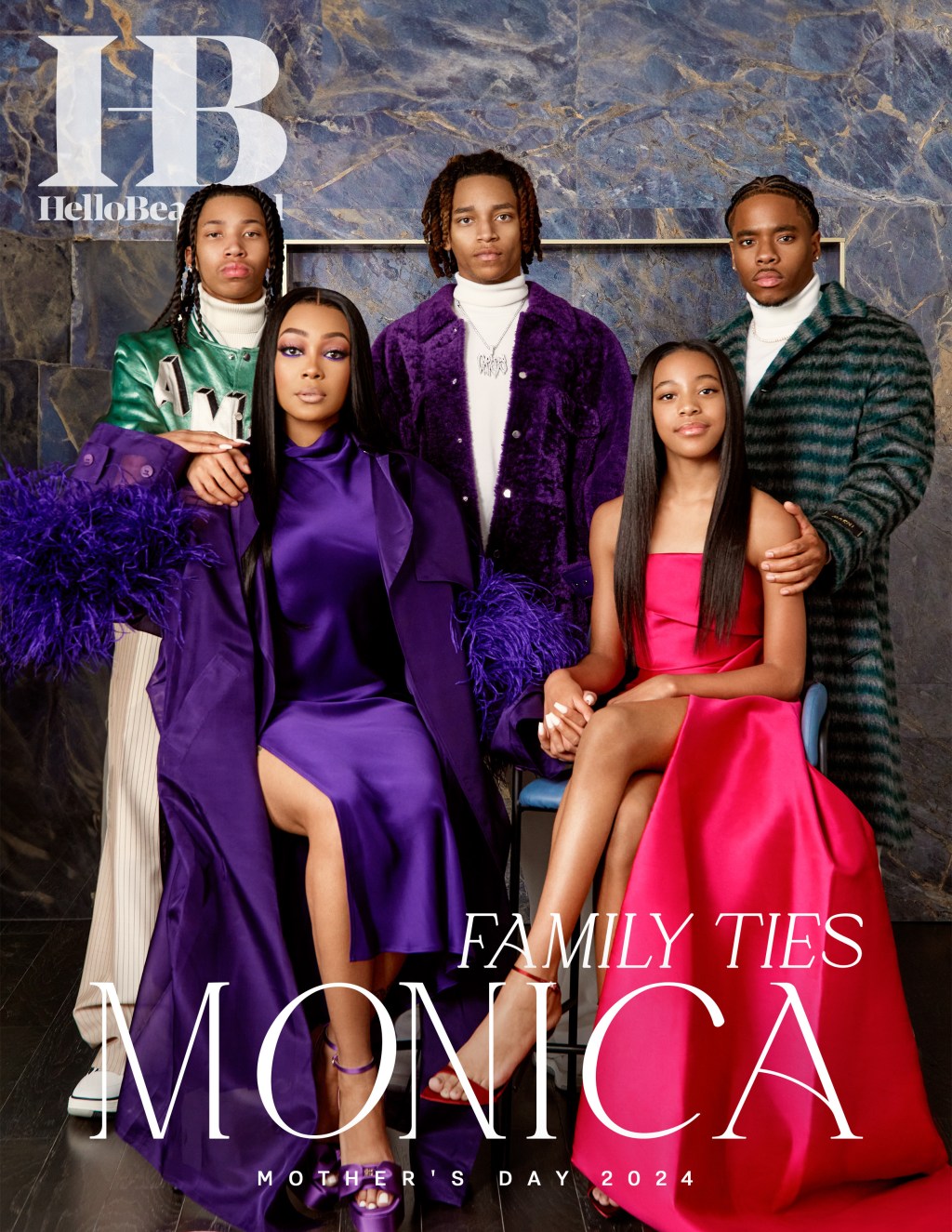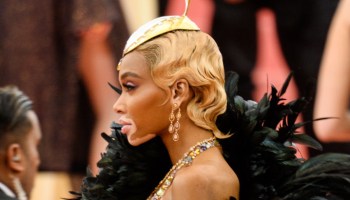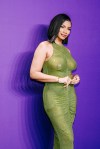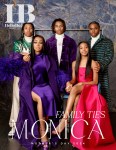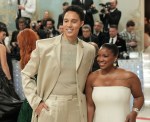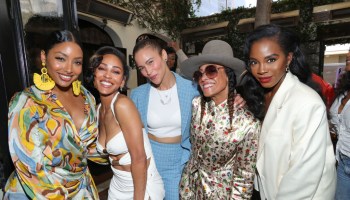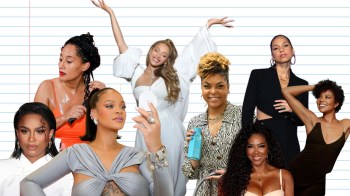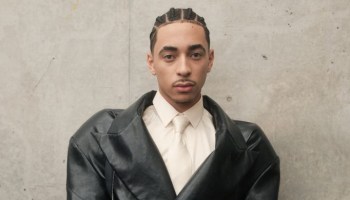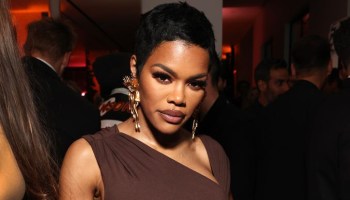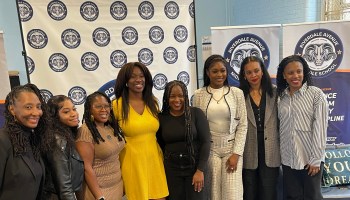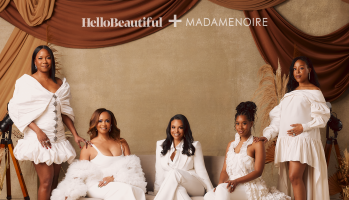
Source: Steve Granitz / Getty
The Camp Exhibit at The MET Museum is like stepping into a fashion matrix of history and meaning. The idea of camp, birthed in the queer community, has infiltrated and interweaved through many marginalized communities. The grandiose. The glamour. The satirical. The irony. Living in almost a real life fantasy because life, at times, can be so cruel. Andrew Bolton, the head Curator for the Costume Institute, and curator of Camp: Notes On Fashion, described camp to WWD, “Camp is deeply political, actually, which is why it reflects and reacts to the zeitgeist….Camp is so much a part of our vocabulary now, which is why it is difficult to define. It had almost become invisible after its mainstreaming after [Susan] Sontag. With the assimilation of gay culture, there was a coincidental or corresponding assimilation of camp and the aesthetic of Camp. But I do still think that at times when our cultures are sort of polarizing, it does bubble to the surface again.”
Camp: Notes on Fashion, might have been one of the most perplexing themes for the general public (and even celebs) to understand. Camp has been so interweaved into our culture, like air, it’s almost difficult to discuss something that just is. In Sontag’s essay, she writes, “there are special reasons why Camp, in particular, has never been discussed. It is not a natural mode of sensibility, if there be any such. Indeed the essence of Camp is its love of the unnatural: of artifice and exaggeration. And Camp is esoteric — something of a private code, a badge of identity even, among small urban cliques.” The interesting thing about the dichotomy between Camp: Notes on Fashion and the Met Gala is that people think the two are intertwined. As I sat in the office of Andrew Bolton, he leaned in and said, “You know, my fashion and Anna’s fashion are different.” What you see on the red carpet of the iconic stairs isn’t an interpretation of the exhibit. However, this year was particularly interesting as many of the attendees were camp culture themselves. It almost mirrored Susan Sontag’s Notes on Camp, where Andy Warhol then actually had Sontag sit for seven of his Screen Tests, the four and half minute video stills the artist had started working on earlier that year. Warhol had mentioned Sontag ‘might be OK’ for his projected film of The Thirteen Most Beautiful Women (1964). Ironically, Sontag had been obsessed with beauty for most of her life, writing in her journal, “Physical beauty is enormously, almost morbidly important to me.” As I strolled through the exhibit, I couldn’t help but think how pleased Sontag must be. One of the most prestigious institutions, with fashion and arts’ most coveted curator, had an entire exhibit inspired off of her works from over 50 years ago.
When you approach the exhibit and see it drenched in pink, you might automatically think that this is about homosexual history and culture. Possibly a teaching moment or even a staunch and historically conservative institution taking a political position. However, it is all this and even more. Sontag explained, “While it’s not true that Camp taste is homosexual taste, there is no doubt a peculiar affinity and overlap. Not all liberals are Jews, but Jews have shown a peculiar affinity for liberal and reformist causes. So, not all homosexuals have Camp taste. But homosexuals, by and large, constitute the vanguard — and the most articulate audience — of Camp.” Yes, Camp is gay, but it’s gay and then some. The timing is perfect and poignant, just like Camp culture itself. As we have more and more Black transwomen being targeted and dying, the exhibit beautifully captures male homosexuality and drag culture from the 1800s. Sontag stated, “The androgyne is certainly one of the great images of Camp sensibility.” It’s perfect for people who are exploring (or solidified) in their gender identity and serves as a form of hope that if Oscar Wilde can survive persecution, that you can undoubtedly do the same…and thrive. She further explained, “Camp taste draws on a mostly unacknowledged truth of taste: the most refined form of sexual attractiveness (as well as the most refined form of sexual pleasure) consists in going against the grain of one’s sex. What is most beautiful in virile men is something feminine; what is most beautiful in feminine women is something masculine. . . . Allied to the Camp taste for the androgynous is something that seems quite different but isn’t: a relish for the exaggeration of sexual characteristics and personality mannerisms.”

Source: Danielle James / Images taken at Camp: Notes on Fashion at the MET
The exhibit begins with with the beau ideal. You view early nineteenth century statues with a recognizable contrapposto stance – weight on the back foot, hand on the hip, turned back. This is the original power pose and one that is seen throughout history and even today. The pose has evolved throughout marginalized communities. While considered the tea pot in homosexual communities, the pose shifted to hand on the cocked out to the side hip, weight on one side, emerging as a popular pose for Black women that indicates we are no longer playing games with you.
The exhibit is broken up into eight different sections where you feel you are being educated and impressed all at the same time. The exhibit starts as camp as a verb, an adjective, and a noun. This shows that Camp and Camp culture is all encompassing and can be described and presented in multiple ways. It then continues as Isherwoodian Camp as described in his book The World in the Evening (1954). Then it goes into camp as defined by Susan Sontag in 1964 (and the overall name of the exhibit). It then moves into a section called Failed Seriousness, followed by Camp Eye, before leaving us in a fashion explosion, perfectly named ‘The Dollhouse’.
This exhibit, to me, was incredibly fascinating and I left way more informed when I arrived. It provided the perfect doses of history, culture, and of course, fashion. It’s an exhibit that you have to see more than once, as there are layers and easter eggs throughout the entire thing. You look at it and think it maybe talking or referencing one thing, but depending on your deep connection to marginalized communities, you will see the depths of the layers. Sontag expressed, “Camp sees everything in quotation marks. It’s not a lamp, but a “lamp”; not a woman, but a “woman.” To perceive Camp in objects and persons is to understand Being-as-Playing-a-Role. It is the farthest extension, in sensibility, of the metaphor of life as theater.” In the Black community Camp is code-switching, Camp is W.E.B. DuBois’ theory of double consciousness, Camp is intersectional feminism. Sontang described all of this, “To camp is a mode of seduction — one which employs flamboyant mannerisms susceptible of a double interpretation; gestures full of duplicity, with a witty meaning for cognoscenti and another, more impersonal, for outsiders.” As a Black, immigrant woman, it was amusing to be in a small space with a sample population of NYC and to hear interpretations and thoughts.
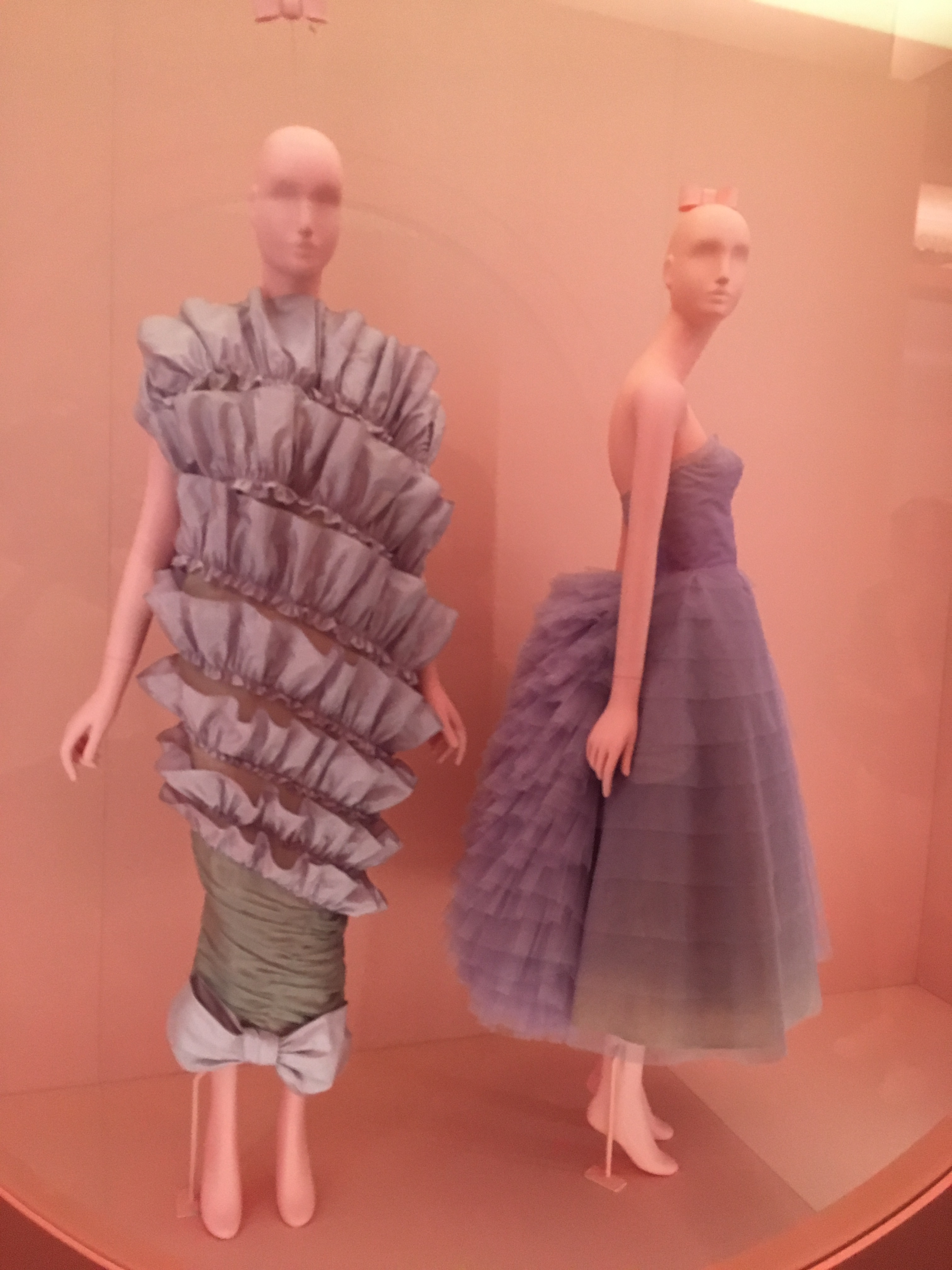
Source: Danielle James / Images taken at Camp: Notes on Fashion at the MET
While in Failed Seriousness, I saw a purple Lanvin dress. The dress of course is a deliberate representation on the camp aesthetic, but it goes even more layered. That specific show, the song that accompanied the dress down the runway was Diana Ross’ ‘Upside Down.’ The on-going dance of Camp culture in the Black community is one of an intertwined synergy. Black culture is woven throughout the exhibit, particularly in the latter parts, illustrating it’s impact on modern day culture.
While it was the homosexual community that came up with “a read” and “yaaaassss”, it was the Black community that amplified it. While the concept of ‘se camper’ grew via Louis XIV’s ruling in Versailles and his extravagant festivals and clothing. You see Camp culture all throughout history, you most likely just weren’t looking. In the 19th Century, during slavery for Black people, what looked like braids to slave masters and owners, were actually paths of freedom in addition to a bonding moment, for slaves.
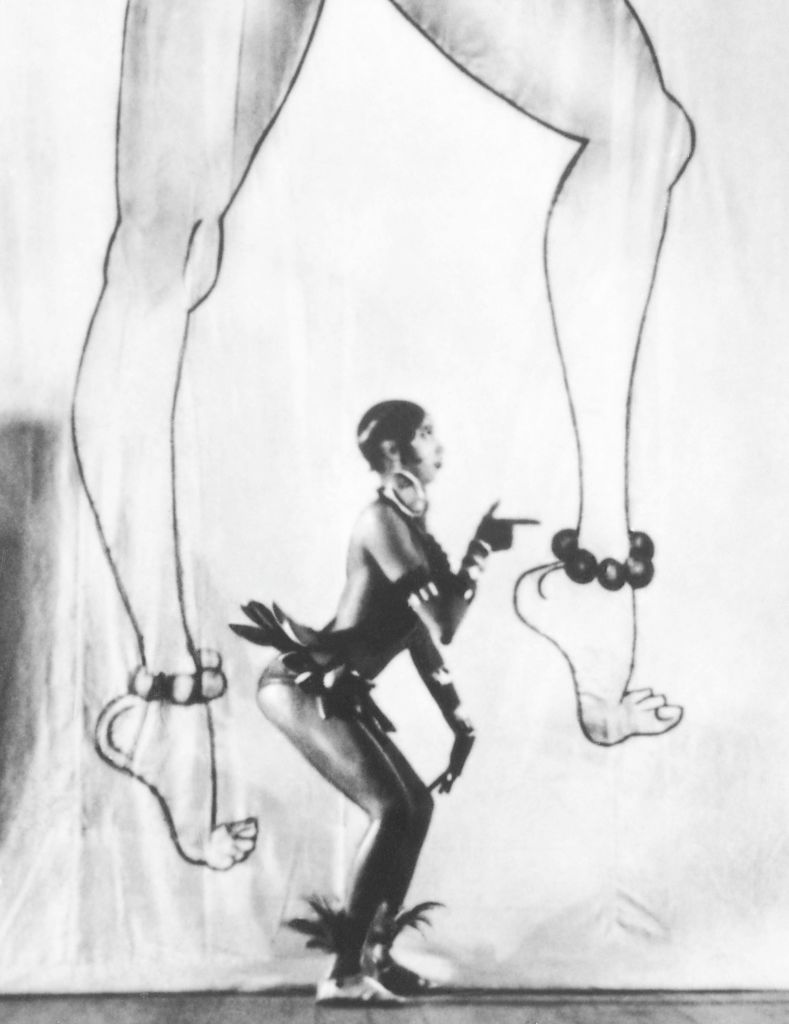
Source: ullstein bild Dtl. / Getty
In the 20th Century, Camp was Josephine Baker and her lavish custom wardrobe. One can’t ignore her infamous banana skirt, which was basically a huge troll towards white people who thought Black people were primitive. She made stereotypes seductive and manipulated the white imagination, twisting their animalistic view of Blackness into an entire performance. The art of the runway walk and really runway show culture is quite Camp and the exhibit paid homage to Willie Ninja, who talk many of your favorites, like Naomi Campbell, slay the runway. In the late 20th Century, camp was also Lil’ Kim and her styles that are still copied to this day. Camp culture is all throughout the hood with door knocker earrings, pum pum shorts, and Chinese slippers.
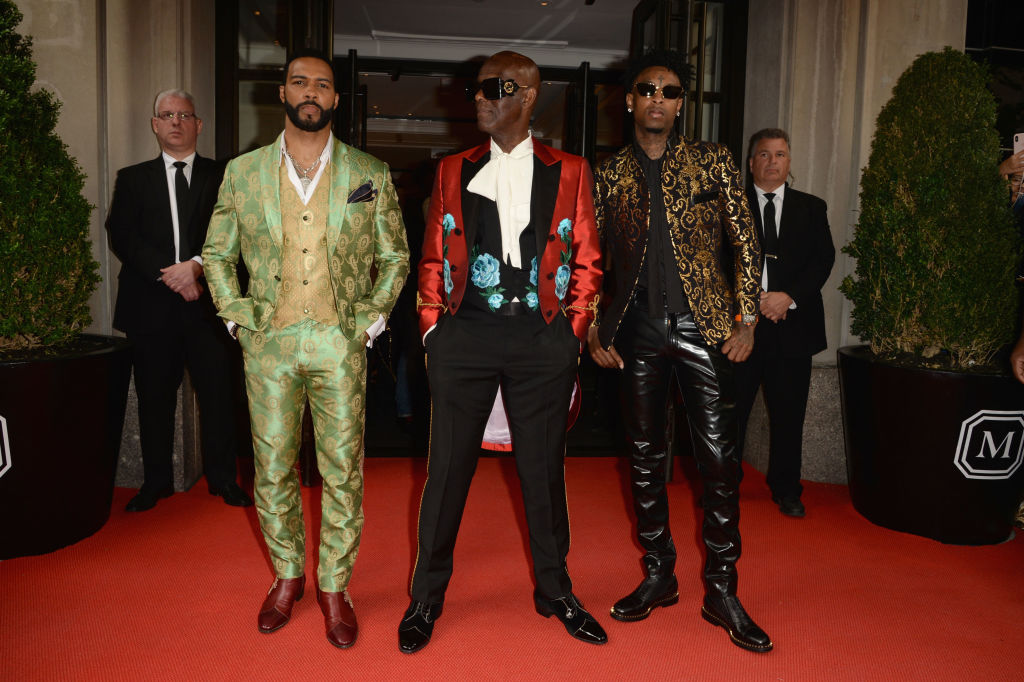
Source: Andrew Toth / Getty
Within the exhibit, you also see the importance of Dapper Dan, who is the epitome of camp in the 21st Century. The above image of him outside the Mark Hotel, heading to the Met Gala, with Omari Hardwick to his left and 21 Savage to his right wearing his designs. This image represented perseverance and overcoming adversity. The man who literally had his business shut down by high end fashion is now the industries darling and getting all the accolades he deserves. This is Camp in one of it’s truest forms. Something that Oscar Wilde is probably smiling upon. Both artists (yes, fashion design is an art) were persecuted over their creativity; when in reality, their brilliance wasn’t able to be contained and held by society. The exhibit does a beautiful job of intertwining Wilde’s story and illustrating his importance and influence on Camp culture.

Source: Steve Granitz / Getty
The above dress worn by Cardi B. at the 61st Annual Grammys is from the Thierry Mugler archives of A/W 1995. It was incredible that Mugler let her wear this design (I mean, it’s from the archives, meaning there is just one and if it’s not the original, then he replicated it) and even more telling of her cultural influence that it’s on display at the MET. A former stripper, turned superstar, who has morphed into the people’s Beyoncé.
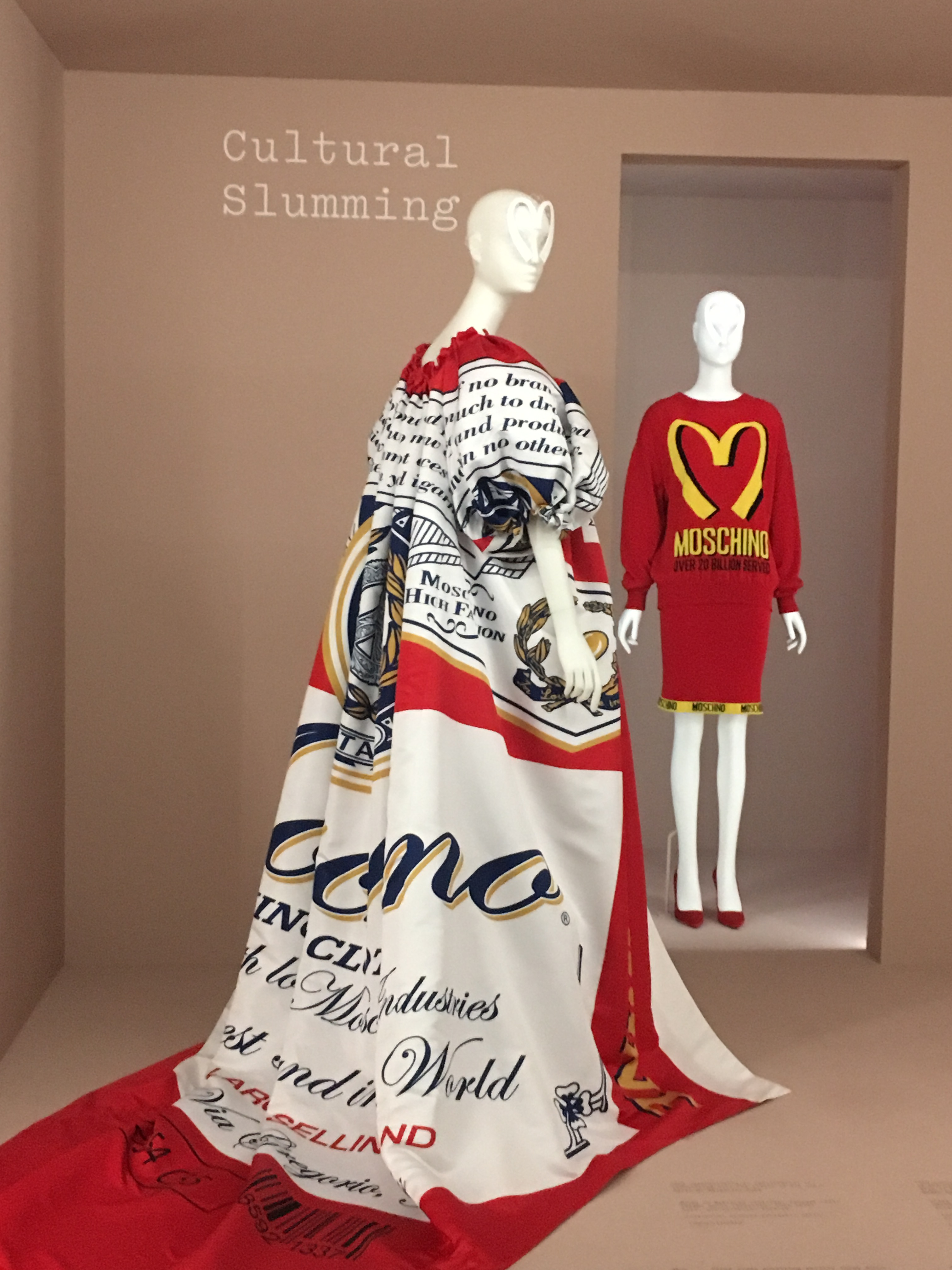
Source: Danielle James / Images taken at Camp: Notes on Fashion at the MET
The most stop you in your tracks moments of the exhibit is The Dollhouse. The large room looks almost like a warehouse of color coded fashion. It literally is a illustrative representation of camp in all it’s many fashion forms. In one section, you see the Moschino collection from Fall 2014. The collection was a mashup of Moschino and McDonald’s. I overheard a woman giving a tour say about it, “No one really wears this stuff.” I thought it was the exact satire of camp, as people indeed “wear this stuff” everyday. You see it with people carrying the McDonald’s bags for a quick $5.00 lunch.
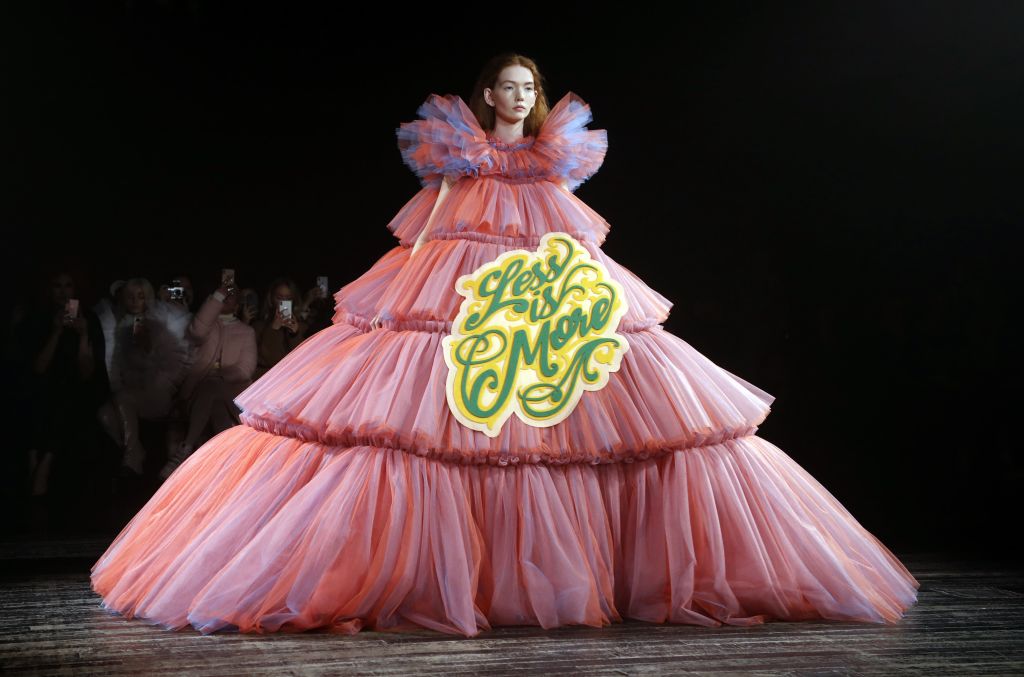
Source: FRANCOIS GUILLOT / Getty
In another section, you see a recent 2019 collection from Viktor and Rolf with the “Less is More” dress. While the dress says these three words, it’s a lavish ball gown that was furiously photographed as it went down the runway. The play on meme culture. The room, while it looks like a fashion closet Carrie Bradshaw could only dream of, is actually a historical perspective of fashion and it’s influence (and response) to culture.
Camp: Notes on Fashion is a love letter to marginalized communities. It’s a reminder that the unique, the different, is truly our cultural pulse.
DON’T MISS:
11 Facts About The House Of Louis Vuitton That I Learned At The Volez, Voguez, Voyagez Exhibition
20 Things I Learned At The Black Fashion Designers Exhibit At FIT
